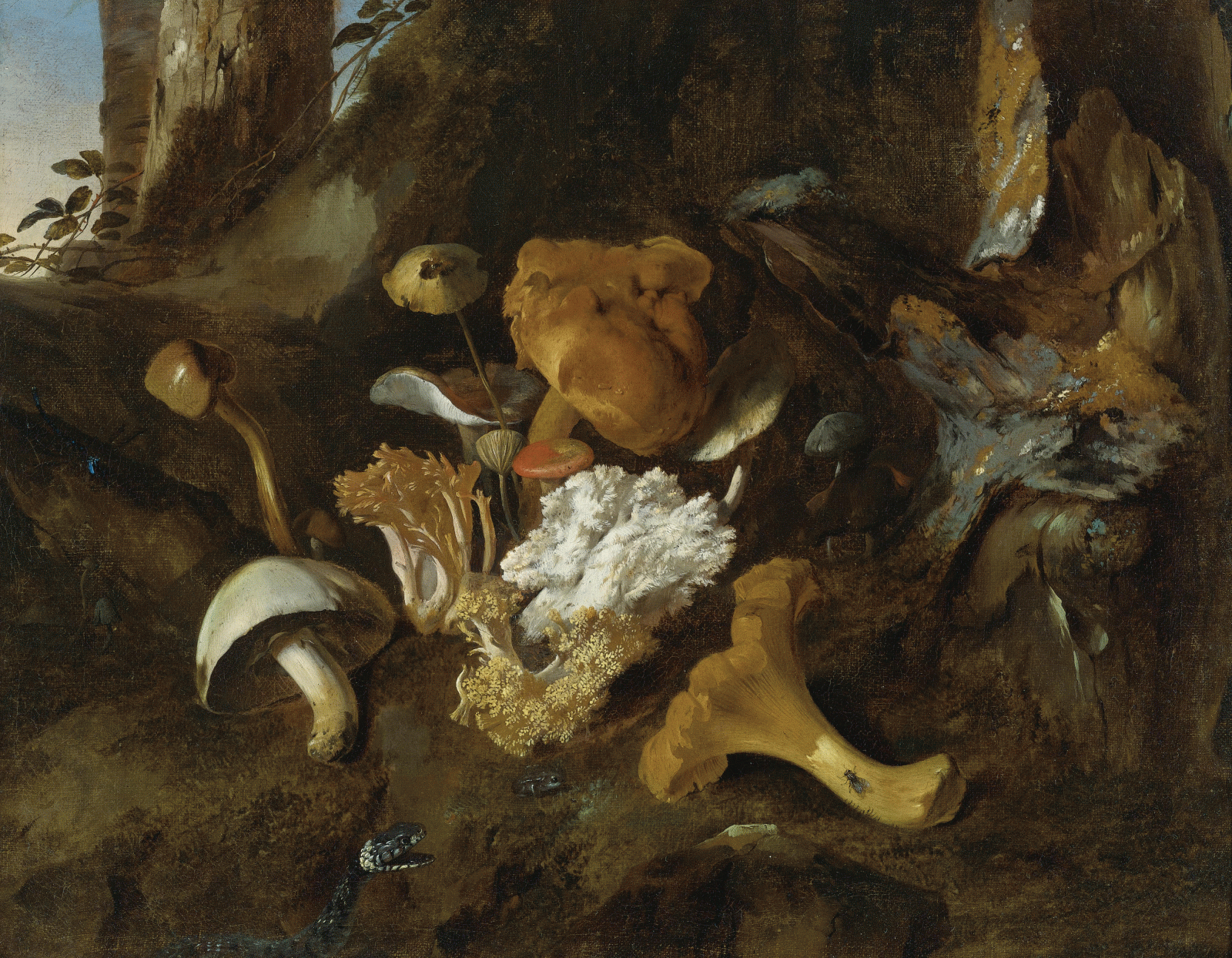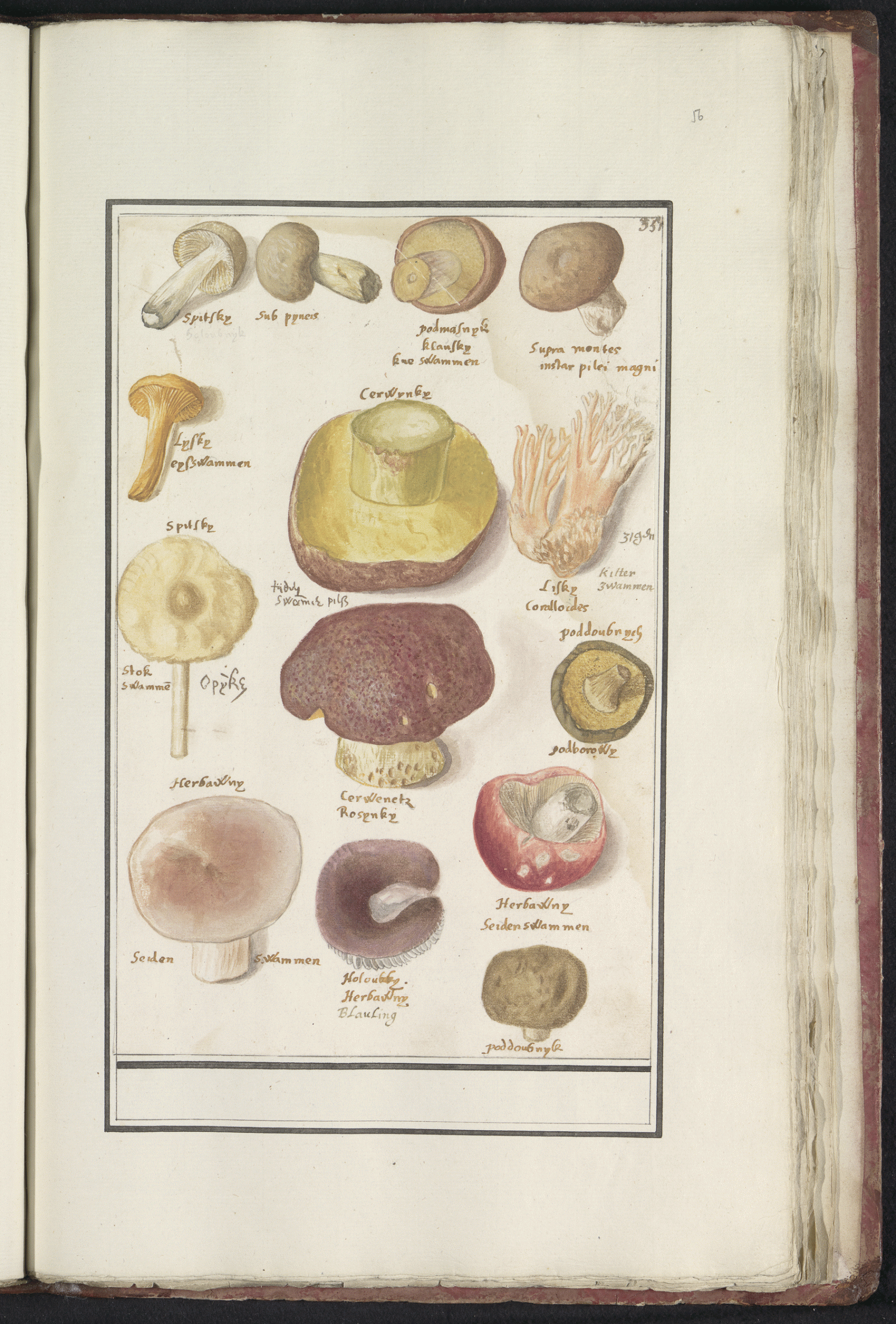Research
Theatrum Fungorum: Picturing Fungi in the Early Modern Low Countries (1450–1700)
Lucas Vanhevel

Otto Marseus Van Schrieck, Forest floor still-life with mushrooms, butterflies and a snake, ca. 1657, oil on canvas, 32,6 x 41,2, sold at Sotheby's, New York, 27 Januar 2011, lot 241.
This study investigates historical representations of fungi – a much overlook subject in art historical research and the Social Sciences that surely deserves a closer examination. Fungi are, in broader terms, a very elusive presence in man´s everyday life. Operating outside – or, at best, at the very fringes of – human senses and attention span, fungi are bound to a history of misunderstanding and neglect. Despite their marvelous ubiquity and profusion, and despite their vital importance to nearly all ecosystems, including those inhabited by humans, their involvement in historical human affairs is largely underestimated. Even within the emerging field of eco-critical humanities, which puts into discussion Western-based relational ontologies of man and nature, fungi risk languishing in the shadow of the two more familiar “F's”: the Fauna and the Flora.
In presenting a history of fungi-related images and their producers, this research aims to shed light on the historical entanglements between human beings and fungi through the vantage point of these neglected non-human organisms. In particular, the study explores the rare occasions in which these elusive organisms have captured the attention and imagination of man, thus becoming the protagonists of poignant visual practices. Special attention is paid to the anomalous moments in which mushrooms managed to seep through the cracks of human concerns beyond the pictorial plane; moments in which perceptions seem to have shifted away from hackneyed mushroom tropes in favor of an increased sensitivity to fungi's unique “otherness”; moments of paradigmatic shift towards more inclusive views of nature and biodiversity. The study will also look at the motivations and desires, the dreams and curiosities, of the people who engaged with fungi as a pictorial subject – but also at their narcissism and ignorance regarding this subject matter. This will allows us to gain a better understanding of how fungi have been perceived and understood, both intellectually and aesthetically, throughout modern history. The author will also provide new material to reconsider and assess afresh a set of familiar questions of art historical and scientific relevance related to objectification, consumption, shifts in taste, genre-development, and intellectual currents. It is hoped that such a critical re-examination of the human-fungus nexus will eventually help us re-assess changing perceptions towards nature and ecology while expanding our understanding of the topic in a diachronic perspective.
This project is part of the Research and Fellowship Program 4A Laboratory: Art Histories, Archaeologies, Anthropologies, Aesthetics, a cooperation between the Kunsthistorisches Institut in Florenz and the Stiftung Preußischer Kulturbesitz.

Fungi in Anselmus De Boodt’s albums of naturalia, ca. 1600, now in the Rijksmuseum, Amsterdam. RP-T-BR-2017-1-11-56.


